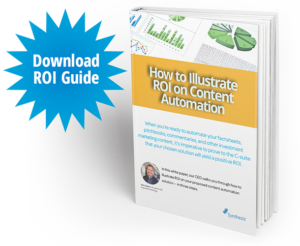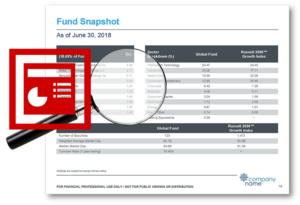How to Rock Your Content Automation Implementation

In a blog post by our CEO, he draws a comparison between setting up a rock concert and doing an investment management content automation implementation. In the post, he points out that the critical behind-the-scenes logistics of these operations are not fully appreciated. But they’re vital to the outcome.
For example, think back to a time you arrived early to a concert. You may have noticed the roadies methodically working to get all the equipment set up and working perfectly. Because of this, the band can just get up on stage, grab their instruments, and put on a great show. The roadies and logistics teams don’t get the attention from all the screaming, raging fans, but they certainly deserve some recognition for the role they play.
What Rock-N-Roll Teaches Us About Investment Marketing Content Automation
The success of a content automation solution for investment managers hinges on how well it’s set up. Ideally, when the solution is well-thought-out during implementation, it runs smoothly and provides tremendous value to the business. When it comes to implementation of any kind, experience matters. This is especially true for investment management marketing automation. Reaching a firm’s goals for accuracy and efficiency is best accomplished by using experienced professionals who have specific experience implementing content automation for investment marketing. The risk of missing time-to-market and return-on-investment KPIs greatly decreases when implementation is done professionally.
Picture Bill, the roadie, handing Slash a slightly out of tune guitar, or Neal Peart being sent on stage without spare drum sticks. Imagine the act starting late because someone forgot where the plug to the synthesizer is. Picture the guy on the tracking spot-light, the only person who knows how to run it, calling in sick. In all of these cases, the show goes on, but it’s not the event it was meant to be, is it?
Rock-n-roll analogies aside, there are several critical aspects of planning an automation solution for compliant data-driven content like fact sheets, pitchbooks, or commentaries. These include:
- Creating templates
- Creating shareable data components like charts, graphs, and disclosures
- Integrating and mapping data
- Setting up options for commercial-quality publishing
- Documenting and applying business rules
- Integrating other technologies in your workflow (robo-writing, CRM, compliance system, etc)
- QA & Testing
- Planning for ongoing support and maintenance
Each item requires the right mix of experience and skills to implement accurately, on time, and within budget. There are a few main ways investment managers typically approach these implementations, and it’s critical to carefully consider the outcomes of each approach.
DIY vs. Turnkey Implementation
Two of the most common approaches to investment management content automation are DIY (do-it-yourself) and Turnkey. A popular driving factor for using do-it-yourself (DIY) solutions is the perceived advantage of having hands-on-control. This approach can be successful when investment managers have the skill-set and extra internal resources required to support the DIY solution. The marketing, IT, and data teams do all of the implementing work with in-house resources. Marketers must understand how to configure the automation for all of the data sources, audiences, products, and compliance scenarios involved. Oftentimes, firms hire a few extra full-time employees to accomplish the implementation and ongoing support for the solution. However, this can drive up costs and slow speed-to-market considerably. When a firm doesn’t have the extra internal resources, time, or expertise, they may opt for turnkey solutions instead of trying to do it themselves.
Turnkey implementations are much different than DIY. They are completed by a professional team of experts who understand how to configure automation solutions for the specific needs and requirements of asset managers. In the turnkey model, the solution is configured for true automation so that the marketing team doesn’t have to spend much time in the system. This sets firms up to produce more volume of higher quality documents while hitting time-to-market goals. In fact, when looking at the time-to-implementation, turnkey implementations roughly double the speed-to-market of DIY solutions.
Faster Time-to-Market
In our experience delivering turnkey implementations, this approach should only take between 14 and 19 weeks to complete. Though, some can be done in as little as 8 weeks depending on the volume and complexity of the content being automated. Asset managers who go with a turnkey deployment do so because they want a fast turnaround and need to start reaping the benefits of automation right away. Turnkey models reduce the risk of long and expensive implementations that miss the goals for true automation and efficiency.
Meanwhile, DIY implementations have been shown to take anywhere from one to three years to implement. As mentioned above, a large contributor to the longer implementation time for a DIY solution is the team’s learning curve to master new technology and apply it to their production workflow. This is challenging for some asset management marketers because it almost always involves a complicated set of data-and-rules-driven publishing requirements. These skills don’t necessarily fall in the marketers’ realms. Unfortunately, time-to-market suffers as a result of the new skills and tasks required of the marketing team. When an implementation takes a year or more to complete, firms risk losing strategic advantage.
Related: Quarter-End Production | The Fast Fish Eats the Slow Fish
Lower Total Cost of Ownership (TCO)
A common issue around implementation is how asset managers calculate TCO. The concert venue is a fixed price, but the cost of power, equipment, instruments, and unforeseen hiccups aren’t included. Those hidden costs have to be calculated and factored into the total cost of implementation and ongoing maintenance. If a firm is still struggling after a year or more into implementation, the costs start to add up. In addition to licensing fees, the costs of converting to a new system should be considered.
For example, there is a cost associated with keeping the existing solution going while the new system is being set up, including the cost to convert to new design templates. One mid-sized asset manager we worked with was using an agency to produce their factsheets in InDesign. The firm continued to pay the agency while they set up a PowerPoint-based solution that required re-designing every template in PowerPoint and re-mapping the data. The PowerPoint solution took them about 18 months to implement. This must be factored into the TCO, along with the internal labor costs of hiring more people to implement the new solution. According to a Forrester Economic Study, one asset manager using a DIY solution required an average of “six internal FTEs from Salesforce.com specialists, marketers, project managers, developers, and sales teams to fully integrate and launch the solution in its environment.”
The TCO of a turnkey solution is almost always less than a DIY solution. This is simply because it can be implemented much more quickly and without any additional internal resources. So, while the vendor performs the implementation, the marketing team can focus on strategically driving the business forward.
Faster ROI
Turnkey solutions generally yield a much quicker ROI due to the shorter duration and lower total cost of ownership. In our whitepaper, How to Illustrate ROI on Content Automation, we show how to calculate direct and indirect (hidden) costs to arrive at the total enterprise costs for a firm’s current process. In most cases, firms greatly underestimate the true cost of their status quo, which makes it difficult to prove ROI. A thorough analysis should be done to evaluate the TCO of each automation solution, including the true cost of implementation.
Turnkey Implementations Minimize Risk
When making a business case for an automation solution, asset managers should consider the risk involved in the implementation requirements. Firms must make sure the solution they choose will support their business case. Some examples are implementation timelines and budget, projected ROI, and TCO targets. Professional turnkey implementations are more risk-averse. Turnkey deployments can be completed sooner, more thoroughly, and will cost less over time. This is especially true if a firm has complex data, documents, and distribution scenarios. If that is the case, the turnkey model may be more strategic. It sets firms up to be served by an experienced vendor in implementing and servicing complex solutions.
Think of the Turnkey model as the solution with the professional roadies, trained for a successful setup. Firms put on their best performance with tailored and finely tuned tools in place.
Share this post if you liked it! You may also subscribe to our blog to be notified when new posts are published.
Here are some related resources that might interest you:







 Compare the Top 3 Finserv Content Automation Vendors [White paper]
Compare the Top 3 Finserv Content Automation Vendors [White paper] Create Pitchbooks the Drive Sales [White paper]
Create Pitchbooks the Drive Sales [White paper] Build vs. Buy: Should Your Financial Services Firm Outsource or Insource Marketing Technology? [White paper]
Build vs. Buy: Should Your Financial Services Firm Outsource or Insource Marketing Technology? [White paper]  10 Tips for Rebranding your Fund Marketing Documents [White paper]
10 Tips for Rebranding your Fund Marketing Documents [White paper]

